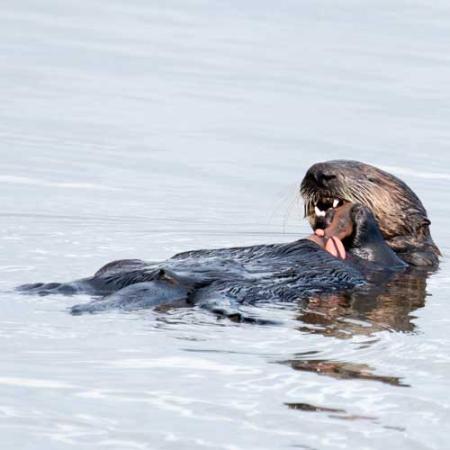It’s tough to become a fossil. There are a lot of factors, like the animal’s body size, the environment where it died, and the surrounding plate tectonics. All of these have to be just right for fossils to form and eventually be found millions of years later. As paleontologists, we consider these factors while we look for rocks that are likely to contain fossils of the animals and time periods we’re interested in.
For the past decade a Burke Museum team, led by Dr. Christian Sidor, curator of vertebrate paleontology, has been investigating the largest mass extinction in Earth’s history, the Permo-Triassic mass extinction, or the “Great Dying,” about 250 million years ago.
As part of this effort, we look for fossil-bearing rocks from the earlier Permian period to tell us about the conditions before the extinction and Triassic period rocks to help us understand what went extinct and how life recovered in the aftermath. Luckily for us, there are a few places on earth that preserve terrestrial animals from both of these time periods. A major portion of them are found in southern Africa, with the animals from the Karoo Basin of South Africa being some of the most well-studied and collected.
Our collaborative team includes scientists from the Burke Museum, Field Museum, Southern Methodist University, and Iziko South African Museum and focuses on the rocks of Zambia and Tanzania where we work closely with Zambian and Tanzanian collaborators.
Over the years, our team has collected many significant fossils—including everything from some of the earliest dinosaur relatives to instances of tumors in our distant relatives. We’ve also found several new species of animals. After these fossils are prepared and studied, they will be returned home and will be held in museums and on display in their countries of origin.
This decade of work in Tanzania and Zambia has greatly improved our understanding about the fossil records of these countries, but also has raised new questions about extinction, survival, and recovery dynamics of the Great Dying that beg for further investigation.
That is exactly what our team, led by former Burke graduate student Dr. Brandon Peecook, set out to do this summer in Zambia. Our team had mixed levels of experience in Zambia; some members, like Christian, have been a part of these expeditions since the very first expedition in 2009 and some, like myself, had never done fieldwork there before.
Our expedition took place in August in North Luangwa National Park, a conservation refuge deeply committed to preserving Zambia’s wildlife and, coincidently, home to incredibly fossiliferous Permian and Triassic rocks.
We set up base camp in the park and spent each day hiking to exposed rock either looking for fossils or digging them up; a standard routine for field paleontologists.
This expedition, however, was unlike any that I had experienced. The mornings began with noisy bird alarm clocks on cue for the spectacular sunrise. At any point while hiking you were likely to find lion, hyena, and elephant tracks and on occasion startle one of the many antelope species or even an elephant. At one point, we had a troop of baboons barking at us while we worked a site. To dig up the fossils of mammal predecessors and dinosaur precursors while being harassed by a troop of wild baboons is not exactly the “norm” as a paleontologist.
At nights we would sit around the campfire, review notes from the day, and enjoy the absolutely overwhelming night sky. After desperately trying to stay awake until 9:00pm, we would retreat to our tents to fall asleep to the sounds of territorial lion groans and hyena laughs.
For me, working in a place with abundant wildlife made me appreciate the lives of the extinct animals we were collecting so much more.
Our expedition was incredibly successful with abundant collections of both Permian and Triassic fossils including everything from tiny teeth to fish scales to a huge skull of one of our distant relatives called Rhachiocephalus.
These fossils will allow us to research questions like: Which animals went extinct at the end of the Permian? Which animals didn’t go extinct and what made their survival possible? How long does recovery after a mass extinction take? Are there similar patterns of extinction and recovery globally or are there regional differences? Being surrounded by animals that are under the threat of a current mass extinction makes this work not just thrilling for me personally, but also highlighted how the study of past mass extinctions has relevance for today.
The fossils we collected on this expedition have arrived at the Burke Museum and we’ll begin preparing and studying them once the vertebrate paleontology collections have moved into the new Burke Museum. We are excited to share our work and findings with the public!
---
Megan Whitney is a PhD candidate at the University of Washington in the Biology Department studying vertebrate paleontology in Burke Curator Christian Sidor’s lab.






